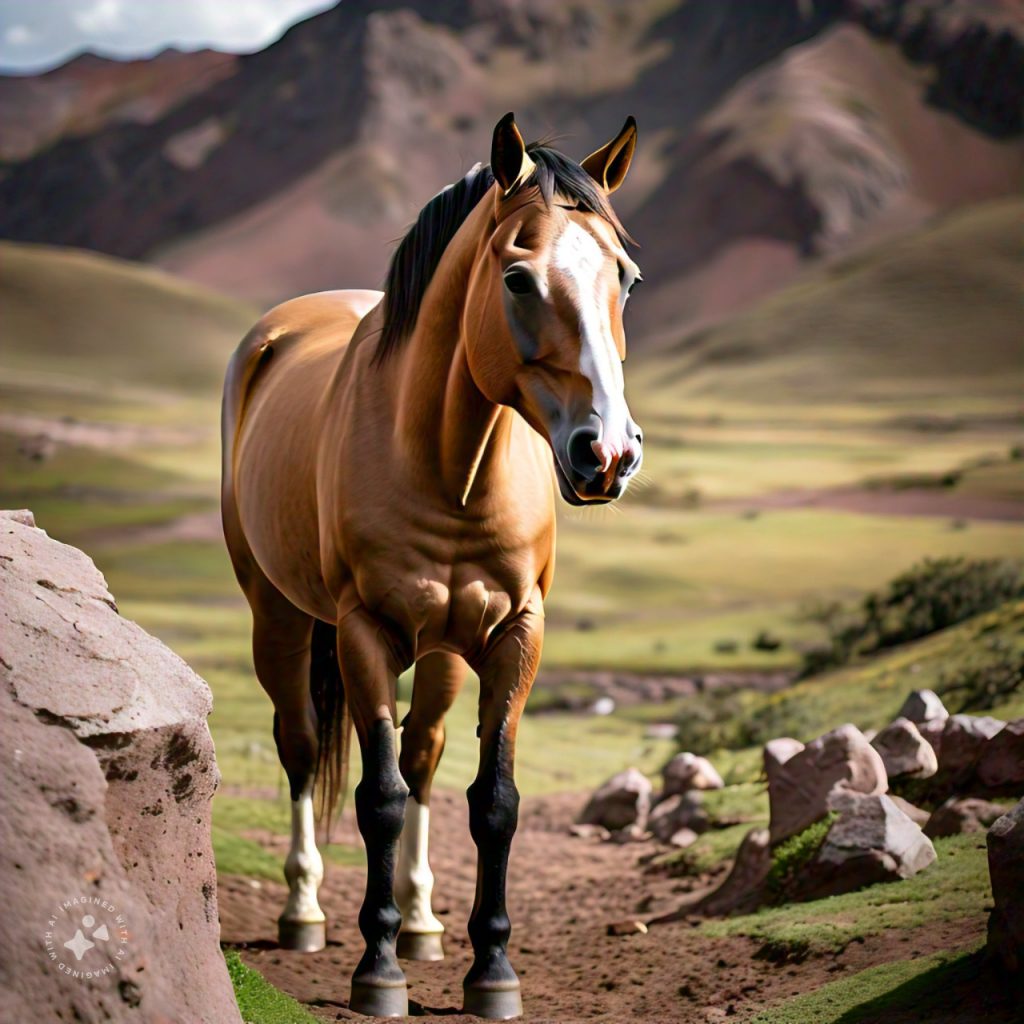Introduction to the Andean Horse Breed
The Andean horse breed, often referred to as the Peruvian horse or the Peruvian Paso, is a remarkable breed known for its unique gaits, agility, and strong connection to the mountainous regions of South America. This breed has a rich history deeply intertwined with the cultures and traditions of the Andean people. This article provides an in-depth exploration of the Andean horse breed, including its origins, physical characteristics, temperament, uses, and care requirements.
History and Origins
Historical Background
The Andean horse breed has roots that date back to the time of the Spanish Conquistadors in the 16th century when Spanish horses were introduced to the Americas. These horses interbred with the indigenous breeds of South America, resulting in a distinct breed that adapted well to the rugged terrain and climate of the Andes mountains.
Over the centuries, Andean horses were selectively bred by local communities for their agility, endurance, and unique gaits, which became essential for transportation and agricultural work in the mountainous regions. The breed gained recognition for its smooth riding abilities and its role in cultural traditions and festivities.
Development of the Breed
The Andean horse has undergone a careful breeding process to enhance its desirable traits. Breeders have focused on developing the breed’s natural gait, strength, and temperament to create a horse that is not only beautiful but also functional. The breed has been recognized for its contributions to both the agricultural economy and cultural heritage of the Andean region.
Physical Characteristics
Size and Build
The Andean horse is typically a medium-sized horse, standing between 14.2 and 15.2 hands high. They have a compact and muscular build, well-suited for the demanding terrain of the Andes. Their sturdy legs and strong hooves enable them to navigate rocky and steep landscapes with ease.
Coat and Colors
Andean horses come in a variety of coat colors, including bay, black, chestnut, gray, and palomino. The breed features a fine coat that is often thick and glossy, providing protection against the elements. Their long, flowing manes and tails are another striking feature, enhancing their overall beauty.
Distinctive Features
One of the most distinctive characteristics of the Andean horse is its unique gaits, particularly the “Paso Llano” and “Sobreandando.” These gaits provide a smooth, comfortable ride that distinguishes the breed from many others. The Andean horse is also known for its expressive eyes and well-defined facial features, contributing to its overall appeal.
Temperament and Behavior
Disposition
The Andean horse is known for its gentle and calm temperament. They are highly trainable and exhibit a friendly disposition, making them suitable for riders of all experience levels. Their intelligence and willingness to work create a positive training experience, fostering strong bonds with their handlers.
Energy Levels
Andean horses possess moderate energy levels, making them well-suited for various activities, from leisurely trail rides to competitive events. They thrive on regular exercise and mental stimulation, enjoying tasks that challenge their abilities.
Uses of the Andean Horse
Equestrian Disciplines
The Andean horse is versatile and excels in various equestrian disciplines, including:
- Trail Riding: Their smooth gaits and sure-footedness make them excellent trail companions in mountainous terrain.
- Show Competitions: The breed is often seen in competitive events, showcasing their unique gaits and athleticism.
- Traditional Festivals: Andean horses play a significant role in cultural festivities and parades, demonstrating their beauty and grace.
Agricultural Work
Historically, Andean horses have been used in agriculture, assisting with transportation of goods and working the land. Their strength and endurance make them valuable assets in rural communities, where they continue to play an important role in daily life.
Care and Maintenance
Nutrition
Providing a balanced diet is essential for the health and well-being of Andean horses. They thrive on high-quality forage, grains, and supplements tailored to their specific nutritional needs. Regular access to clean water is crucial, and feeding schedules should be consistent to support optimal digestive health.
Grooming
Regular grooming is important for maintaining the health of the Andean horse’s coat. Grooming helps to remove dirt and debris while also promoting healthy skin and coat condition. Special attention should be given to the mane and tail, which should be brushed regularly to prevent tangling and matting.
Exercise and Training
Regular exercise is essential for keeping Andean horses fit and mentally stimulated. They benefit from a structured training program that includes a mix of riding, groundwork, and exposure to various environments. Positive reinforcement techniques are effective in training, as they help build trust and enhance the horse-handler relationship.
Conclusion
The Andean horse breed is a remarkable example of adaptability, strength, and grace. With a rich history and distinctive physical traits, the Andean horse continues to captivate equestrians around the world. Whether used for competitive riding, trail adventures, or traditional agricultural work, the Andean horse is a breed that embodies the spirit and culture of the Andean region.
Key Takeaways
- The Andean horse breed has historical roots in the Andes mountains and has evolved through selective breeding.
- They are medium-sized horses known for their unique gaits, including the “Paso Llano” and “Sobreandando.”
- Andean horses possess gentle temperaments and are suitable for riders of all levels.
- Proper care, nutrition, and regular exercise are essential for their well-being.
For horse lovers seeking a breed that combines beauty, versatility, and a rich cultural heritage, the Andean horse is an exceptional choice, offering both charm and functionality in the equestrian world.

